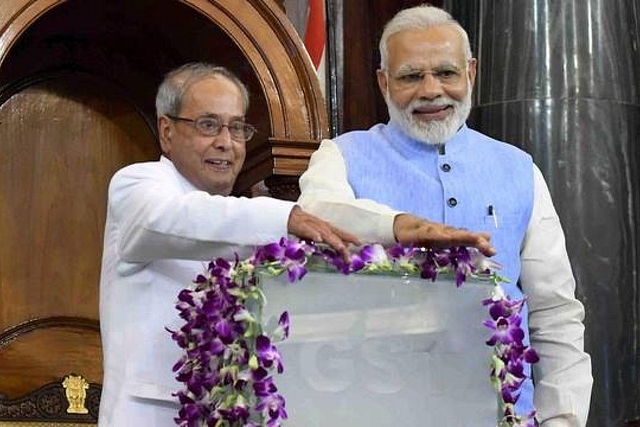
Flashback On GST’s Second Birthday: Where It Went Wrong, How To Fix It
GST can be fixed, but not at one go. A two-year time frame to move to a better structure will make GST a ‘good and simpler’ tax by 2021.
You can also read this article in Hindi- जीएसटी की द्वितीय वर्षगाँठ- क्या हुआ गलत और कैसे करें सुधार
India’s biggest tax reform since Independence – the goods and services tax (GST) – continues to remain a work-in-progress even two years after its launch. Today, on the second anniversary of its launch (1 July 2017), one can sum up what’s wrong with GST in one line: there are too many rates, the compliance system is too complicated, there are too many people evading the tax, and the total collections are underwhelming.
In May 2019, GST collections were barely above the Rs 1 lakh crore mark, after dropping from April’s Rs 1.13 lakh crore. To avoid having to compensate states for revenue shortfalls, the total monthly collections need to top Rs 1.14 lakh crore, and, as of now, this is simply not on the horizon.
However, there is a danger of reading too much into this inability to fix GST for so long. The tax is difficult to fix quickly precisely because it was difficult to even build a consensus on it in the first place. The high rates and complicated structures are the direct result of trying to get 29 states and many Union Territories to sign up to the new tax, which involves giving up of fiscal sovereignty by both the Centre and states.
States signed up because they were guaranteed one thing they loved: 14 per cent revenue growth annually. This is why rates are still higher than they need to be. The alternative is to go after the evaders with an iron hand, but once again, this is not easy. For one, coercive efforts to ensure compliance do not sit well with the need to gain wider acceptance for the tax. And second, with states being guaranteed money for jam, they have no need to make much of an effort to earn their revenues. They are happy to let the Centre take the blame for GST’s shortcomings, while they reap the benefits.
Another reason why we have a multiplicity of rates and special exemptions is Narendra Modi government’s political adroitness. Many incumbents the world over have lost elections after introducing GST, and the last Malaysian government lost after the ultimate winner – Mahathir Mohammed – promised to scrap GST last year.
If Modi’s government survived an unpopular GST, it was because it has been making compromises on its structure – some adroit changes here and there to mollify voluble interest groups like small traders, restaurant owners, realtors, or jewellery traders. Thus, we have several rates (1 per cent, 3 per cent, 5 per cent, 12 per cent, 18 per cent, 28 per cent, and an additional rate that includes cess on luxury items), not to speak of some products with input tax credit and some without.
Rates cannot be rationalised as long as revenues are under pressure. And revenues will be under pressure as long as the economy does not revive strongly.
The other option – one which few economists recommend – is to rationalise and lower the rates, and let demand revive after a lag, which will bring in higher revenues. But this tax cut-based approach has the disadvantage of leading to a higher short-term fiscal deficit, as states will still have to be compensated in the meanwhile. If tax rates are cut, the only way to give states 14 per cent revenue increments annually is by letting the fiscal deficit slip for a while before growth and tax revenues pick up.
This risk may, however, be worth taking. The way forward thus could be:
One, cut rates to just three, at 5, 15, and 25 per cent, with one super cess rate for a handful of luxuries.
Two, let revenues weaken or fall in the short run, and loosen the fiscal deficit target for a year, before demand picks up and tax revenues start becoming buoyant again.
Three, eliminate – in stages – special schemes like the composition scheme, and GST without input tax credit. Instead, offer small businesses free or very low-cost support to ensure compliance and returns filing. This way the pain points will be reduced, and the GST net extended without a major blowout in the small business sector.
Four, raise the income tax threshold for the non-salaried classes, especially people running small, proprietary businesses, to Rs 5 lakh per annum, so that increased GST-related turnover does not automatically result in a mismatch between higher business turnover and reported incomes.
GST can be fixed, but not at one go. A two-year time frame to move to a better structure will make GST a 'good and simpler’ tax by 2021.